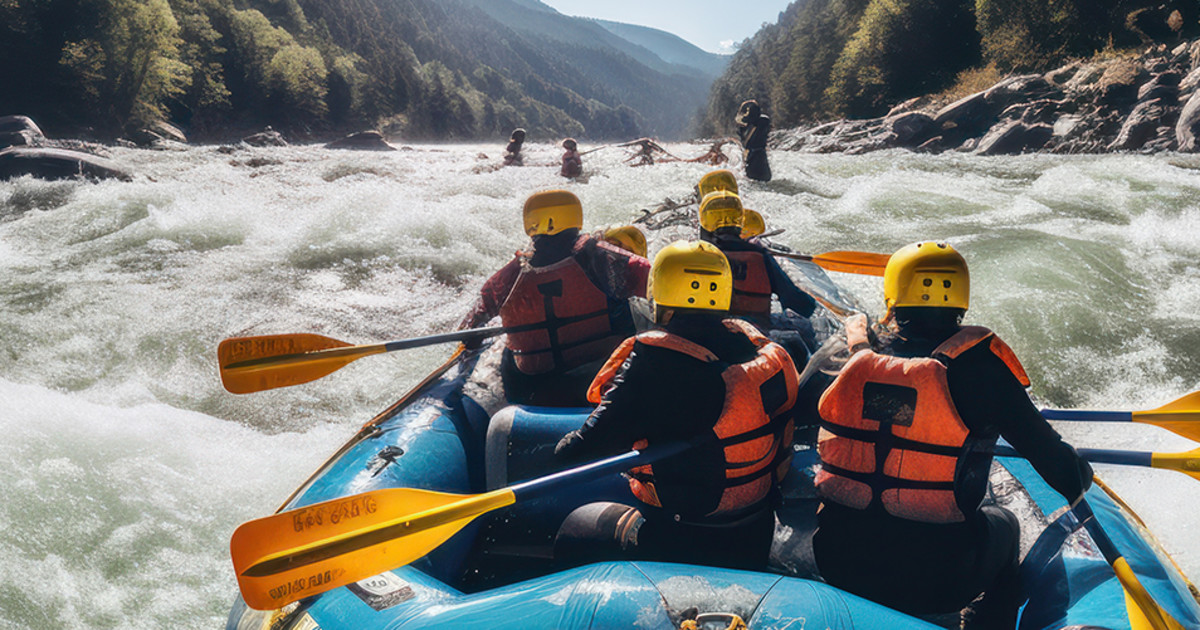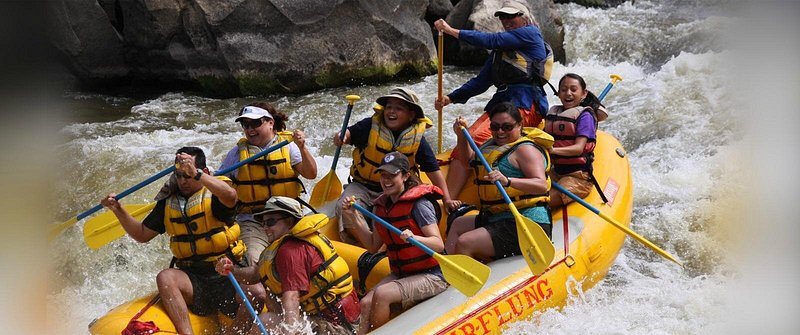Necessary Skills for Water Rafting
Understanding the art of water rafting requires a combination of specific abilities and knowledge to navigate the uncertain currents of rivers, making it a thrilling yet possibly hazardous activity. From comprehending the details of river dynamics to swiftwater rescue techniques and seamless team interaction, the trip down the river requires a mix of knowledge and versatility. White Water Rafting Colorado.
Paddling Strategies
Mastering reliable paddling strategies is critical for browsing water boatings safely and effectively. One fundamental strategy is the forward stroke, where paddlers dip the blade totally right into the water and pull it back alongside the plethora to create propulsion.
Apart from the forward stroke, the draw stroke is necessary for making quick adjustments or pulling the plethora better to an object. By placing the paddle blade vertical to the water's surface and pulling the water in the direction of the plethora, paddlers can effectively change the vessel's instructions. Moreover, the backstroke acts as a valuable device for supporting or slowing down the boating when required.
River Reading
Reliable paddling methods, such as the forward stroke and draw stroke, play a crucial role in analyzing and navigating river currents, an ability called river analysis. River reading entails the capability to assess the rate, deepness, and direction of the water circulation to make informed choices while navigating rapids. By recognizing how the water walks around obstacles and with various channels, rafters can select the best path to securely traverse the river.
One trick aspect of river reading is identifying various kinds of currents, including waves, hydraulics, and eddies, and understanding exactly how they can influence the raft. Eddies, as an example, are locations where the water moves in a circular movement, often offering possibilities for remainder or tactical maneuvers. Waves can suggest the visibility of challenges or rocks, calling for fast adjustments in paddling method. Hydraulics, frequently known as "holes," are areas where water recirculates back upstream, positioning prospective threats to rafts.
Grasping the skill of river reading is vital for secure and delightful rafting experiences, making it possible for paddlers to browse tough waters with self-confidence and accuracy.

Swiftwater Rescue
Understanding swiftwater rescue methods is critical for water rafting enthusiasts to respond successfully in emergency situation situations on fast-flowing rivers. Swiftwater rescue includes a collection of specialized abilities and knowledge aimed at safely drawing out people from swift-moving water. One key aspect of swiftwater rescue is acknowledging the dangers existing in fast-flowing rivers, such as filters, undercut rocks, and strong currents, to intend and perform successful rescue operations.
Appropriate tools is crucial for swiftwater rescue, including throw bags, rescue ropes, helmets, and personal flotation devices. Rafting lovers should be adept at using this equipment in high-stress situations to guarantee the safety of themselves and others. Furthermore, swiftwater rescue methods typically include team effort and sychronisation among rafters to perform complicated rescue maneuvers efficiently.
Training in swiftwater rescue is highly recommended for individuals involving in water rafting Your Domain Name tasks, as it outfits them with the needed skills to deal with emergencies swiftly and efficiently. White Water Rafting Colorado. By recognizing and exercising swiftwater rescue techniques, water rafting fanatics can boost their security and that of their fellow rafters on tough river explorations
Team Communication
Reliable synergy in water rafting depends heavily on smooth interaction among group participants to make certain collaborated and secure navigating via difficult river problems. Clear and concise communication is essential for the success of any type of rafting expedition. Group participants have to be able to properly convey essential details such as paddling commands, warning signals, and navigational instructions.
In the fast-paced and commonly unpredictable atmosphere of river rafting, accurate and timely interaction can indicate the difference in between a prospective calamity and a successful run - White Water Rafting Colorado. Each staff member plays an essential role in the general communication process, whether it be paying attention attentively to the guide's guidelines, passing on site here details to other paddlers, or signaling for help when needed
Establishing an usual language and communication system prior to striking the water is essential. This makes sure that every person is on the exact same web page and understands exactly how to connect efficiently during the rafting journey. By fostering a culture of open communication and common regard, rafting teams can improve their efficiency and safety and security on the river.

Security Protocols
In the context of water rafting, the structure of team communication developed throughout explorations is further strengthened with rigorous adherence to safety procedures. Safety and security protocols are vital in ensuring the well-being of both rafters and guides during water rafting his response adventures.
An additional trick security protocol is the thorough instruction given by overviews before embarking on a rafting journey. By purely adhering to these safety methods, water rafting adventures can be both safe and exhilarating for all participants involved.
Final Thought
To conclude, understanding important abilities for water rafting is critical for a delightful and secure experience on the river. Paddling strategies, river reading, swiftwater rescue, group communication, and safety methods are all important parts that add to an effective rafting trip. By honing these abilities, rafters can navigate difficult waters with self-confidence and make sure the safety of themselves and their employee.
Grasping the art of water rafting calls for a combination of specific skills and expertise to navigate the unforeseeable currents of rivers, making it a thrilling yet possibly dangerous task. By placing the paddle blade perpendicular to the water's surface area and pulling the water towards the plethora, paddlers can efficiently alter the vessel's instructions.Understanding swiftwater rescue methods is crucial for water rafting lovers to react effectively in emergency scenarios on fast-flowing rivers.Effective team effort in water rafting depends greatly on seamless communication amongst group members to guarantee worked with and secure navigation with difficult river problems.In conclusion, mastering necessary abilities for water rafting is crucial for a risk-free and satisfying experience on the river.